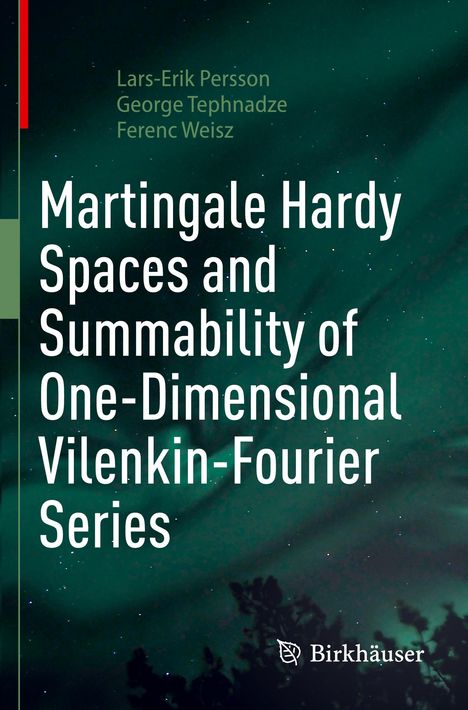Lars-Erik Persson: Martingale Hardy Spaces and Summability of One-Dimensional Vilenkin-Fourier Series
Martingale Hardy Spaces and Summability of One-Dimensional Vilenkin-Fourier Series
Buch
- Springer International Publishing, 11/2023
- Einband: Kartoniert / Broschiert, Paperback
- Sprache: Englisch
- ISBN-13: 9783031144615
- Bestellnummer: 11697873
- Umfang: 644 Seiten
- Nummer der Auflage: 23001
- Auflage: 1st ed. 2022
- Gewicht: 961 g
- Maße: 235 x 155 mm
- Stärke: 35 mm
- Erscheinungstermin: 23.11.2023
Achtung: Artikel ist nicht in deutscher Sprache!
Weitere Ausgaben von Martingale Hardy Spaces and Summability of One-Dimensional Vilenkin-Fourier Series
Klappentext
This book discusses, develops and applies the theory of Vilenkin-Fourier series connected to modern harmonic analysis.The classical theory of Fourier series deals with decomposition of a function into sinusoidal waves. Unlike these continuous waves the Vilenkin (Walsh) functions are rectangular waves. Such waves have already been used frequently in the theory of signal transmission, multiplexing, filtering, image enhancement, code theory, digital signal processing and pattern recognition. The development of the theory of Vilenkin-Fourier series has been strongly influenced by the classical theory of trigonometric series. Because of this it is inevitable to compare results of Vilenkin-Fourier series to those on trigonometric series. There are many similarities between these theories, but there exist differences also. Much of these can be explained by modern abstract harmonic analysis, which studies orthonormal systems from the point of view of the structure of a topological group.
The first part of the book can be used as an introduction to the subject, and the following chapters summarize the most recent research in this fascinating area and can be read independently. Each chapter concludes with historical remarks and open questions. The book will appeal to researchers working in Fourier and more broad harmonic analysis and will inspire them for their own and their students' research. Moreover, researchers in applied fields will appreciate it as a sourcebook far beyond the traditional mathematical domains.


